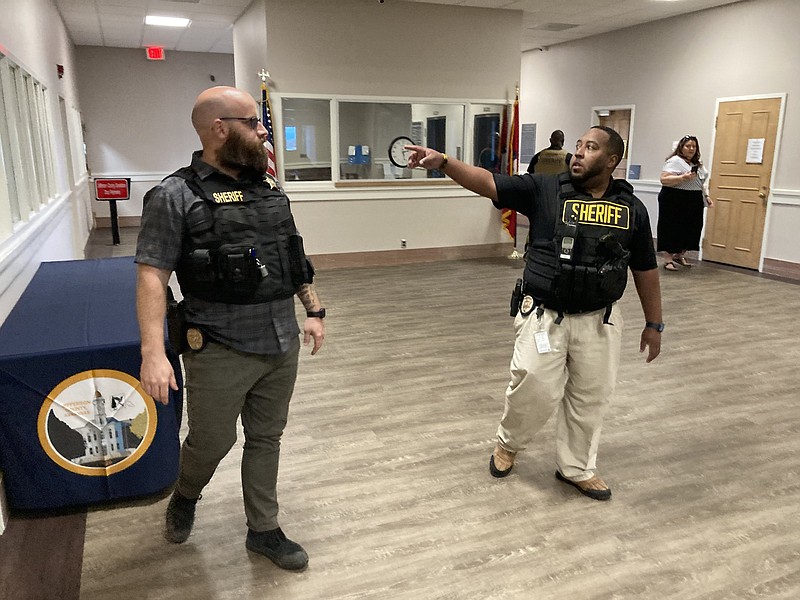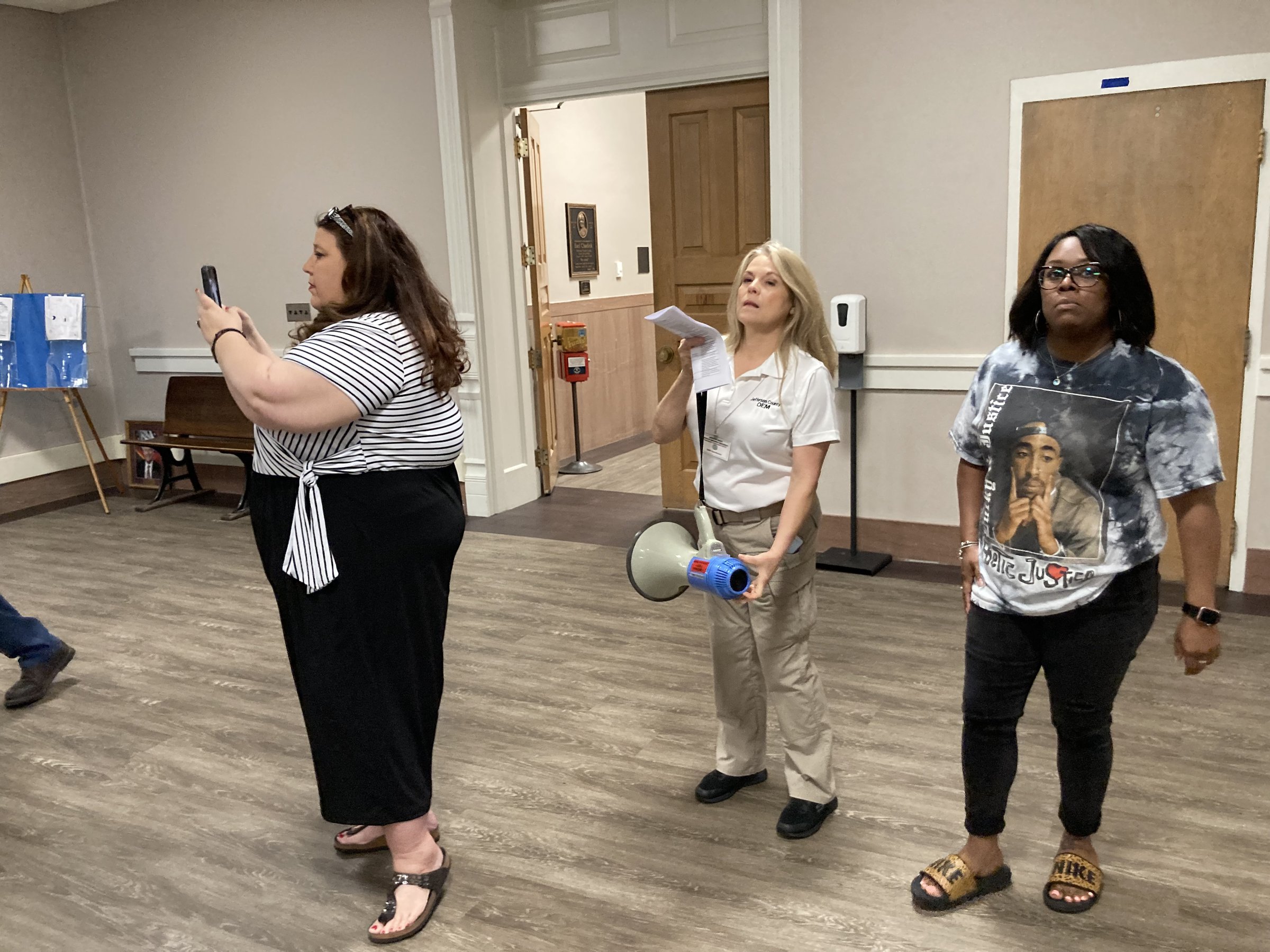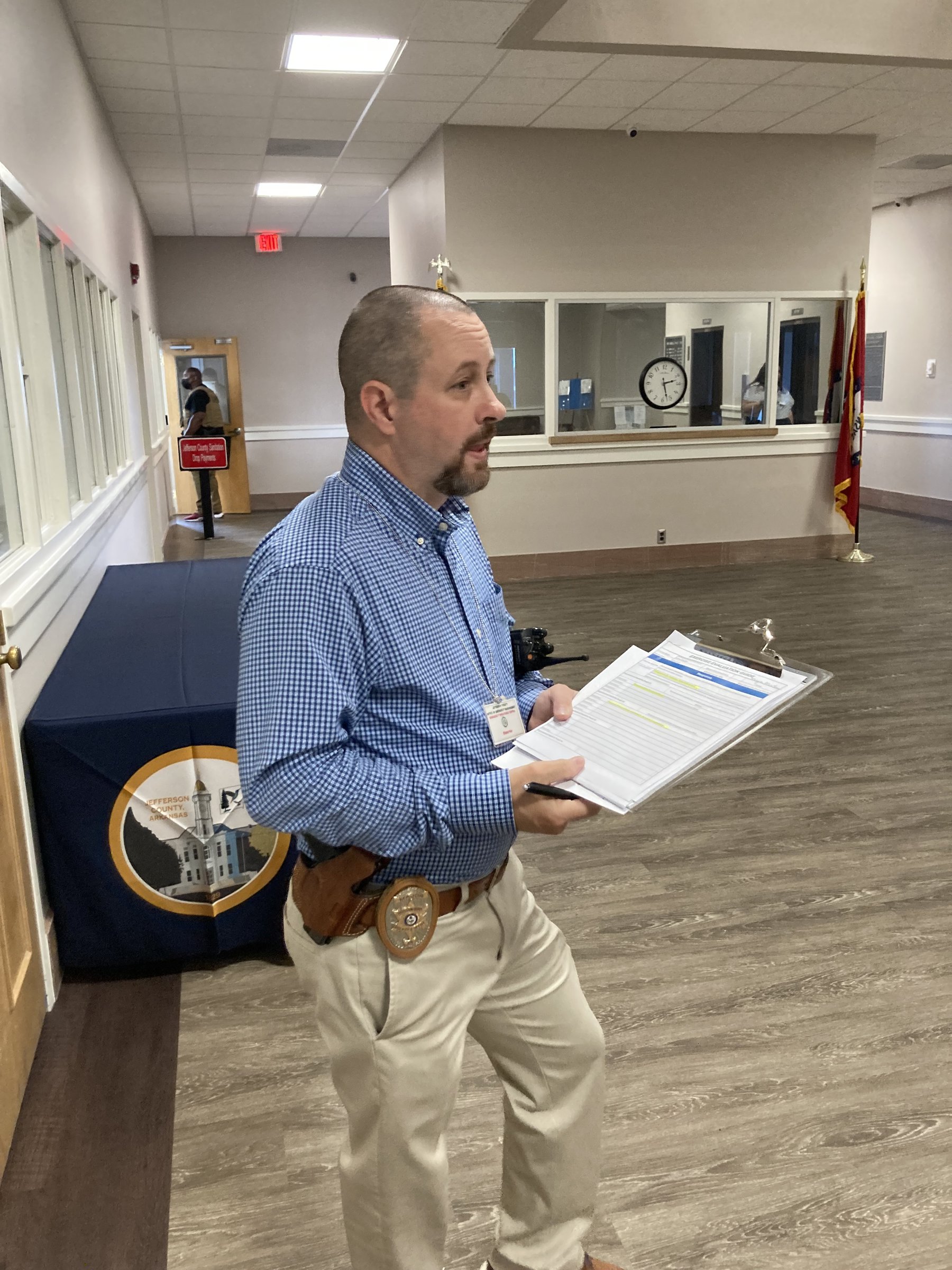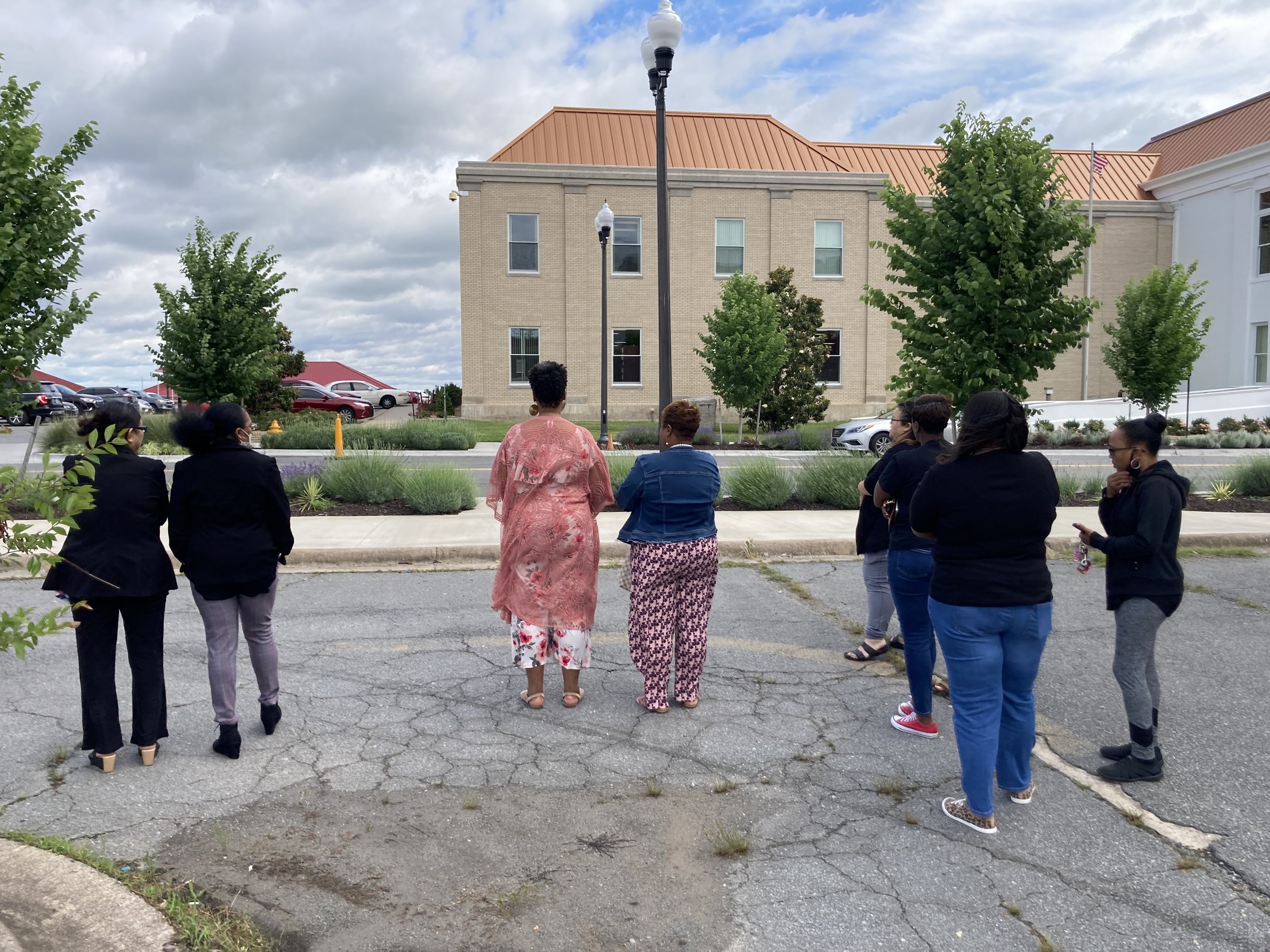It was a typical day at the Jefferson County Courthouse. And then it wasn't.
Employees of one of the many county departments went this way and that. A man took tentative steps down the hallway, holding an envelope and looking for the Assessor's Office. Or was it the Real Estate Office? He wasn't sure. A UPS delivery person couldn't find the restroom.
Then, at around 10 a.m., things took on a more serious tone. Sheriff's Office deputies, wearing bullet-resistant vests, began to appear, opening office doors and looking in on the staff.
"Has anyone checked upstairs?" one of them asked.
Soon, they were all loaded on the elevator and heading up to the second-floor offices.
At the other end of the hall, Karen Blevins, director of the Office of Emergency, could be heard a while later saying the courthouse was "clear." And to that, Gary McClain, a major in the sheriff's office, said, "We can begin. Are you ready?"
The next words were amplified by a bullhorn, when a woman came walking down the hall: "This is a test exercise," blared the battery-operated device. "There is an active shooter in the building. Take your emergency precautions."
Planned almost a year ago, but occurring days after an active shooter went on a rampage in a Texas school, a drill to simulate the type of emergency that would require the courthouse to be evacuated was held by the Office of Emergency Management, in conjunction with the sheriff's office.
The exercise was characterized as "soft," meaning everyone in the courthouse had advance warning the drill would take place, but McClain and Blevins said it was important to put the employees through the paces.
"This is part of the building process," Blevins said. "The next time we do this, people won't have notification until the day of."
The purpose of the event was twofold: Get everyone out of the building and get the 9-1-1 dispatchers out of the building and set up at the call center at the Sheriff's office. Those goals were accomplished, Blevins said.
" I think it went pretty well," she said. "There were no major issues. We were able to demonstrate that we accomplished these goals, and for that, the exercise was a success."
McClain, who teaches law enforcement officers and others what to do in the event of an active-shooter situation, carried a clipboard around, jotting down notes on an "Exercise Evaluation Guide" checklist as the 30-minute exercise transpired.
"I'm looking at things going on that are not part of the evaluation paperwork," he said. "I'm seeing things that are good, and I'm seeing things that we need to work on."
Active-shooter training used to include the rule of "run, hide, fight," he said. Now, the advice is to "avoid, deny and defend." To avoid, he said, would be to get to safety if possible. To deny is to keep someone from gaining access to areas where people could be harmed. And to defend, he said, is to take advantage of whatever tools one has at one's disposal.
"It could be a stapler, a keyboard or a fire extinguisher," McClain said. "I will grab that candy dispenser and crush your head with it before I let you kill me. And that's the goal: Stop the killing and then stop the dying."
In addition to moving people out of the courthouse, McClain and Blevins were taking note of other issues that might get in the way of a smooth evacuation.
For one, the courthouse has no public address system, which is why they had to use a bullhorn to get the exercise started. If there was an actual emergency, a quicker and more efficient way of communicating the emergency throughout the building is needed, they said.
"The courthouse used to have a PA system," McClain said. "I don't know what happened to it. Maybe it got taken out in one of the renovations."
A "quick-and-easy fix" to that problem would be if the courthouse phone system could be programmed to act as speaker phones, Blevins said.
Another problem was that some doors the deputies tried to open were locked, making it hard to determine if those offices or spaces had been cleared.
The exercise, despite its serious nature, had its lighter moments.
"I would have broken a window out of this building," one woman said with a laugh, referring to another person's comment about the possibility of not being able to exit the building. "I'm not playing."
By design, courthouse employees were to congregate across the street so that, in the event of a real emergency, supervisors could determine if everyone is out of the building. But apparently not everyone went to the appointed spot.
"I really think that when they left the building, they went to lunch," Blevins said jokingly, adding later, "maybe they are hiding and not ready to come out yet."
Sonya Hall, an employee in the Circuit Clerk's office who was standing outside with several other courthouse employees, said the exercise was worthwhile.
"I'm not going to say I know what to do," she said. "But I did react. I think this makes us more aware. Then again, I think we need to be more aware anyway."
Circuit Judge Rob Wyatt Jr., who was also standing across the street with his staff, said he appreciated the opportunity to have an exercise of this kind.
"It's sad we have to do this," he said, "but I'm glad they had the foresight to plan this. Now we know what to do and where we're supposed to go. I'm glad the county judge and the sheriff worked together to make this happen."
The nearness to the Texas school shooting was taken into consideration and could have sidelined the emergency exercise, Blevins said, referring to the 18-year-old man who entered a school in Uvalde, Texas, last week, killing 21 people, including 19 children.
"I'm glad we did it, though," she said. "I thought that doing it might be too sensitive for some people. But we talked it over and everybody was good with it."
One part of the training, however, was changed, she said.
"We backed off actually having someone play the role of an active shooter and having the deputies go locate him or her," she said. "We did not do that."
McClain said he couldn't remember the last time a drill of this type had been attempted at the courthouse.
"I'm not sure it's ever been done," he said, "not on this large of a scale. The next time, we'll bring the level of intensity up."
The exercise, Blevins said, is one of the requirements of a grant the OEM gets from the state. Paperwork for the grant has to be turned in by August, and this year's event was originally scheduled for February.
"We decided to push it back from then until May when there was a better chance of having good weather," Blevins said. "And then we wanted to wait until after the election. Now, we're already working on plans for next year."



